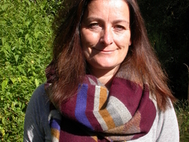Quick facts
Project title:
The letters of Maria Sibylla Merian – a complete, annotated edition
Description
2017
The letters of Maria Sibylla Merian – a complete, annotated edition
Maria Sibylla Merian (1647-1717) is famously known as a natural scientist and artist. In the gardens of Nürnberg and the proximity of the city, she searched for caterpillars and butterflies to observe, study and capture their development. In 1699, her curiosity led her from Amsterdam to South America where she researched and documented the metamorphosis of the insects of Surinam. She published multiple beautifully illustrated copper engravings, that show her relentless work as a scientist and artist. At the same time, she acted as an entrepreneur maintaining international contacts to offer them rarities from overseas. To gain some fame for her works, she traded with booksellers. Via letters, she searched for subscribers to make the manufacturing and publishing of her book possible.
As of now, 18 of these letters scattered over many different archives and published in different places are known. These letters are mainly in German and drafted by Maria Sibylla Merian herself, while some of them are drafted by others in French and Dutch language. With the help of specialists and over the span of multiple months, these letters were newly transcribed in the “Biohistoricum”. In order to do so, scans of the original letters were examined, while the originals are located in museums and archives in Erlangen, London, Nürnberg and Paris.
While transcribing the letters, a new area of research opened up. For this new field of research, sources were examined that have so far been ignored by other scientists. The results of the research are discussed in detailed comments in the book. Unusual words and allegedly false writing led to a more detailed examination of Merian’s language. By researching the recipients of Merian’s letters and other people mentioned, the historic background of the late 17th/ early 18th century is illustrated. More than anything else, the research shows a connection of natural scientists and collectors of naturalia that were connected over impossible distances.
In the book, the image of the original letter will be displayed right next to the detailed transcription. In the case of non-German letters, a translation is provided. Adding to that, there are scientific comments to every letter and a detailed register of the people involved.
By providing all this information, the work will present the first complete, annotated edition of the letters in German language.
Location







